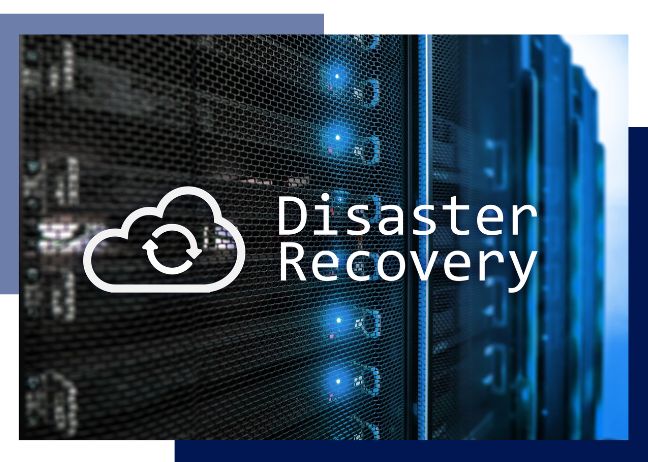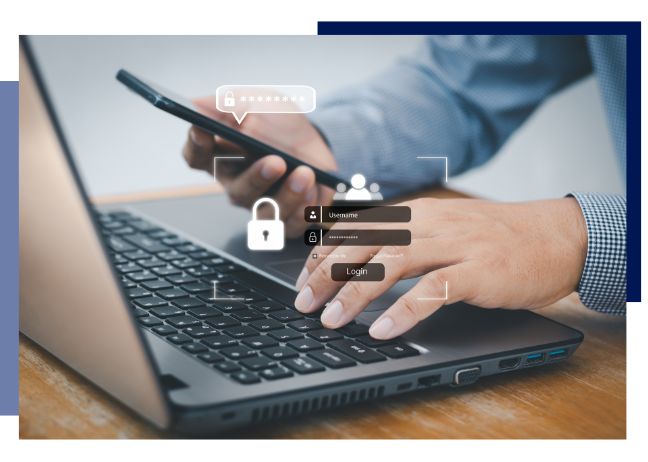Contents:
If something went wrong in your business today—a cyberattack, a power cut, or even just someone accidentally deleting a critical file—how quickly could you bounce back?
That’s where business continuity planning and disaster recovery come in. Together, they help you prepare for the worst so your business can keep moving, no matter what.
What Is BCDR?
BCDR stands for Business Continuity and Disaster Recovery. It’s sometimes also referred to as DRBC. It’s a bit of a mouthful, but it’s really just about two key things:

- Business Continuity (BC): Keeping your business running during the disruption.
- Disaster Recovery (DR): Getting your data and systems back after something goes wrong.
Think of it as having both a fire extinguisher and a plan for what to do while the fire brigade is on the way. One deals with the immediate issue; the other helps you stay afloat while things are being fixed.
Why Does It Matter?
Without a plan, even a small disruption can spiral into a big problem—lost sales, unhappy customers, and a whole lot of stress.
Having BCDR in place means you’re not left scrambling. It gives you a clear path to follow and helps your team stay focused when things go sideways.
We only need to look back to early 2020 for a clear example. When the COVID-19 pandemic hit, offices across the UK were forced to shut almost overnight. Businesses had to rethink how they worked, and the shift to working from home happened at pace. Over time, this has evolved into hybrid working, which is now the norm for many organisations.
For businesses that already had flexible systems and continuity plans in place, the transition was far smoother. For others, it exposed just how unprepared they were for major disruptions.
That shift also introduced new vulnerabilities. As more companies moved to cloud platforms and remote access, cybercriminals saw opportunity.
Ransomware attacks have surged—targeting both public and private sectors with increasing sophistication.
Some recent examples highlight just how damaging these attacks can be:
- British Library (2023): A cybercriminal group leaked 600GB of sensitive data after the British Library refused to pay a ransom. Services were badly disrupted.
- Synnovis (2024): A ransomware attack caused major London hospitals to cancel surgeries and appointments when their pathology provider was targeted.
- KNP Logistics (2023): After 158 years in business, this logistics company was forced to close indefinitely within months of a ransomware breach caused by a weak password and unprotected systems.
Each of these attacks caused significant damage—financially, operationally, and reputationally.
But not all disruptions come from criminals. In July 2024, a faulty CrowdStrike update—designed to protect systems—caused mass outages across the globe. Thousands of businesses experienced blue screen crashes, downtime, and loss of productivity as a result. Even critical infrastructure, airports, and banks were affected.
It was a clear reminder that even trusted software can fail—and when it does, it’s the businesses with proper planning that recover quickest.
That’s why business continuity planning is about more than just IT systems. It’s about building resilience across the board.
What Does Business Continuity Planning Actually Involve?
A good business continuity plan looks at what’s essential for your business to operate and puts steps in place to protect it.
That might include:

- Identifying your most important systems and services
- Deciding who does what when things go wrong
- Making sure there are backups ready to go
- Running simple tests to make sure the plan works
It’s not about creating a 100-page document that sits on a shelf—it’s about having something practical your team can actually use.
BC vs DR – What’s the Difference?
People often mix these up, but they cover different bits of the puzzle:
- Business Continuity is about the bigger picture—keeping your business running while that recovery happens.
- Disaster Recovery is focused on your tech—restoring files, servers, systems.
You really need both. Backups are great, but they won’t help much if nobody knows what to do while systems are down.
What Else Should You Consider?
Beyond your BCDR plan, a few key practices can give your business even more resilience:
1. Security Awareness Training
A lot of breaches happen because someone clicked something they shouldn’t have. Training helps your staff stay alert to phishing emails, dodgy attachments, and other everyday threats.
2. Endpoint Protection
With hybrid and remote working now the norm, your business devices aren’t always inside your office walls. Good endpoint protection helps defend against threats across all laptops, phones, and tablets—wherever they’re used.
3. SD-WAN (Software-Defined Wide Area Network)
SD-WAN optimises your network performance and enhances security by directing traffic through the most efficient paths, especially for remote or hybrid teams. This ensures that data flows smoothly and securely, even in the face of network disruptions.
4. Multi-Factor Authentication (MFA)

MFA adds an extra layer of security by requiring multiple forms of verification before granting access. This is crucial in reducing the risk of unauthorised access, especially for systems that contain sensitive information or are critical to business operations.
These extra layers, when paired with effective backup and disaster recovery solutions, help prevent issues before they escalate.
Final Thoughts
Disruptions aren’t just possible—they’re likely. But with the right plans, tools, and a bit of foresight, they don’t have to spell disaster.
Too many businesses only start thinking about continuity after something’s already gone wrong. Having a plan in place beforehand means you’re not learning lessons the hard way—it means you’re ready to respond, not just react.
Getting your business continuity planning in place is one of the smartest ways to protect your time, your data, and your reputation. And when something does go wrong (because it will eventually), you’ll be ready—not guessing.
Ready to Build Your Resilience?
Tecnica help businesses around Scotland of all sizes create BCDR strategies that actually work—covering backup, cyber protection, and ongoing support.
Our IT Consultancy Services can help assess your current strategy and build a practical roadmap for Business Continuity and Disaster Recovery.
Contact us today to discuss you BCDR needs.
FAQs
Yes—disruptions don’t discriminate by size. In fact, small businesses are often hit harder because they may lack the resources to recover quickly without a plan in place.
You should review your plan at least annually, or whenever there are major changes to your systems, processes, or staff. Regular testing also helps ensure it’s still effective.
Cloud backup is a good start, but not a complete solution. A full disaster recovery strategy includes recovery time objectives (RTOs), roles and responsibilities, and tested recovery procedures.
Yes—having a BCDR strategy in place can help meet compliance requirements for data protection, cyber security, and industry-specific regulations like ISO 27001 or GDPR.
Cyberattacks, hardware failures, natural disasters, human error, and power outages are among the top causes of disruption—many of which are unpredictable.
Follow us on:


